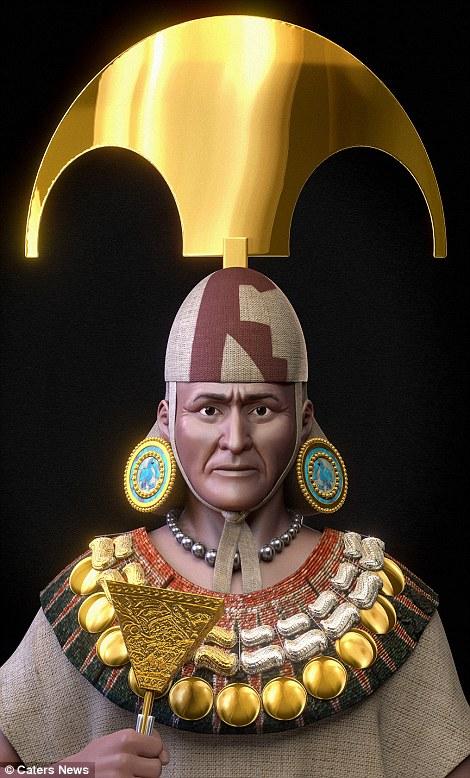
We may never know why the Moche people disappeared, but thanks to advanced 3D technology, we now have a good idea of what one of the society’s rulers looked like. In 1987, a tomb was excavated near the Peruvian town of Sipán; within it were several mummies along with some stunning artifacts. The most notable of the bodies in the tomb was that of a man adorned with ornate jewelry and ornaments, indicating that he was a high-ranking member of a ruling class. Dubbed the Lord of Sipán, the mummy was considered at the time to be one of the ten most important discoveries of the century.
Recently, a team of researchers went to work on digitally reconstructing the face of the Lord of Sipán. 3D computer graphics designers Cicero Moraes and forensic dentist Dr. Paulo Miamoto are best known to us as the “Animal Avengers,” a team of scientists who have repeatedly poured their time and effort into designing and 3D printing prosthetics for injured animals including a dog, a macaw and a tortoise. They’re also members of the Brazilian Team of Forensic Anthropology and Forensic Odontology, and they were commissioned by the Inca Garcilaso de la Vega University to take on the challenge of figuring out who, exactly, the Lord of Sipán was.
Moraes did it, though, beginning by using photogrammetry to obtain a high-quality 3D scan of the artifact. He then uploaded the images into a computer and broke the virtual skull back into its fragments so he could rebuild it from scratch, which he did with the help of a template created from an image of an average male human skull. With forensic anthropological and anatomical advice from Dr. Miamoto, he pieced the digital fragments together, filling in the missing parts in gray.
The completed virtual model was then sent to Dr. Miamoto, who, funded by the Sao Leopoldo Mandic Faculty for Dentistry and Medicine, drew on his forensic knowledge to analyze the skull and formulate a theory on what the Lord of Sipán’s life – and death – may have been like.
“I was pleasantly surprised to find the Moche king had remarkably good oral health,” Dr. Miamoto told the Daily Mail. “He did have a few cavities but considering the period he lived in, his dental work showed he held a high economic position and was wealthy. During his era, it was typical for the majority of the peasants to use their teeth as tools. There was no evidence this person ever did this or did any hard work.”
Meanwhile, Moraes continued his digital reconstruction to recreate the actual face of the ancient ruler, using the same kinds of techniques that have been used to reconstruct the ancient faces of everyone from an unknown Egyptian woman to Jesus Christ. Algorithms in Blender enabled him to apply layers of muscle and skin in appropriate thicknesses according to the structure of the skull, and features such as skin tone were based on those of other Peruvians. Finally, Moraes created digital images of the elaborate gold headdress, shield and other artifacts that were found with the mummy to recreate a fully adorned image of a warrior king.
According to Dr. Walter Alva, the archaeologist responsible for the 1987 discovery of the tomb of Sipán, the recreation is remarkably accurate, closely resembling the earliest known images of a Peruvian ruler. The same technology may eventually used to recreate the faces of the other members of the Lord of Sipán’s court, who were buried with him.
“The reconstruction of the features of the Lord of Sipán and the forensic anthropological analysis has allowed us to get closer to the face of our ancestors,” said Dr. Alva. “It has also been an important step in humanising and understanding more about the Moche Lord of Sipán.”
Discuss further over in the 3D Printed Mummy & Ancient Ruler forum at 3DPB.com.